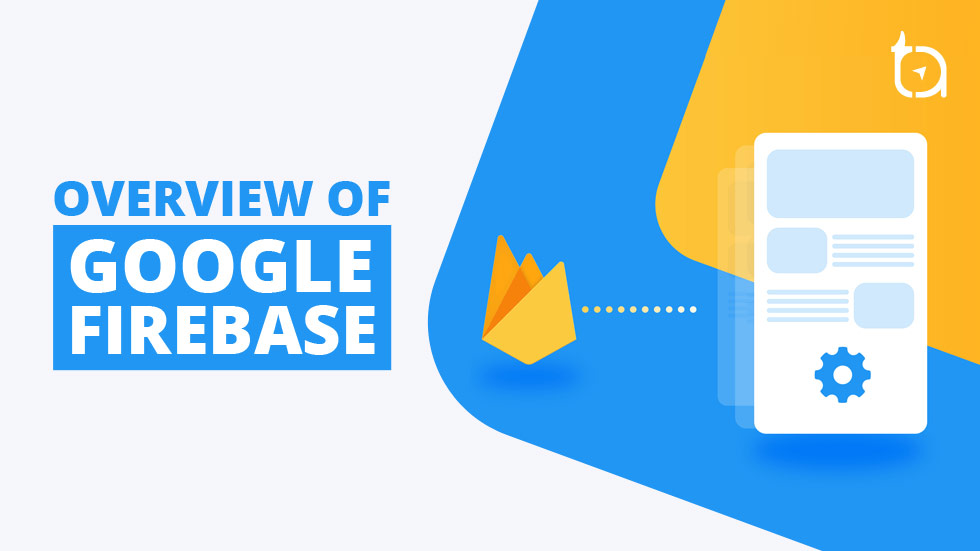Overview of Firebase Backend as a Service Platform
 anshul chauhan
anshul chauhanTable of contents

Introduction of Firebase
Firebase is a Backend as a Service (BaaS) framework platform that provides developers with ready-to-use backend services and functionalities, allowing them to focus on building the frontend and user experience of their applications without having to manage server infrastructure or backend code.
Firebase is a versatile platform that works seamlessly across iOS, Android, and web applications.
Some of the Baas frameworks
Project structure of Firebase
Multiple Projects: In Firebase, you can create multiple projects, each with its own set of configurations
Project Structure: Each Firebase project can contain multiple apps. For example, for a E-commerce project, you might have separate apps for iOS and Android.
Firebase Products Categorization
Firebase products are divide into below 4 categories :
Build: Tools for building and managing apps.
Release and Monitor: Tools for app distribution, testing, and performance monitoring.
Analytics: Insightful analytics to understand user behavior.
Engage: Features for user engagement and communication.
Tools under Build category
Authentication: Manage user authentication with various sign-in methods, templates, and usage analytics. Extend authentication with Firebase Extensions.
App Check: Secure your API resources by preventing unauthorized access from clients. App Check complements Firebase Authentication by providing app or device authenticity attestation.
Cloud Firestore: NoSQL database with powerful querying capabilities. Manage collections, documents, indexes, and monitor usage.
Realtime Database: Store and sync data in real time with a JSON-like structure. Utilize listeners for real-time updates.
Extensions: Extend Firebase functionality with pre-built extensions like Chatbot, Tasks, and Firestore streaming.
Storage: Store and retrieve user-generated files like images, audio, and video without server-side code.
Hosting: Deploy web and mobile web apps instantly using a secure global content delivery network.
Functions: Run backend code without managing servers, written in JavaScript.
Machine Learning: Integrate machine learning capabilities for text recognition, image labeling, face detection, and more.
Remote Config: Customize app behavior using server-side configuration parameters, avoiding frequent deployments.
Cloud Messaging: Send notifications and messages to users, manage message campaigns, and engage users both inside and outside the app.
Tools under Release and Monitor category
Crashlytics: Prioritize and analyze crashes, view stack traces, and group similar issues for efficient debugging.
Performance Monitoring: Track app performance across different metrics, devices, and locations.
Test Lab: Ensure app compatibility across various devices and scenarios without needing physical hardware, with support for CI/CD.
App Distribution: Distribute pre-release versions of apps, gather feedback from testers, and monitor stability.
Tools under Analytics category
- Google Analytics: Gain insights into user behavior, demographics, and app performance with comprehensive analytics.
Tools under Engage category
A/B Testing: Experiment with different app versions and features to optimize user experience.
In-App Messaging: Engage users with personalized messages directly within the app.
Dynamic Links: Redirect users to specific content within the app, even if it’s not installed.
Authentication: Enable anonymous authentication for users who prefer not to create accounts.
Sdk support
Client SDKs:
Client SDKs are designed to be used within client-side applications, such as web browsers, mobile apps (iOS and Android), or other client-side environments.
These SDKs provide functionality for interacting with Firebase services from the client side, such as authentication, real-time database updates, file storage, and more.
They are typically optimized for client-side performance and security and are intended to be included directly in your client-side application code.
Client SDKs often provide authentication methods tailored for client applications, such as social authentication (Google, Facebook, etc.), email/password authentication, phone authentication, and more.
Admin SDKs:
Admin SDKs are designed to be used in server-side environments, such as backend servers or serverless functions.
These SDKs provide full access to Firebase services with administrative privileges, allowing you to perform actions that require elevated permissions, such as managing users, accessing sensitive data, or configuring security rules.
Admin SDKs are typically used to build server-side logic, perform background tasks, integrate with other backend services, or automate administrative tasks.
They are often used in conjunction with Firebase Cloud Functions to implement server-side logic triggered by Firebase events or HTTP requests.
Admin SDKs require administrative credentials (service account credentials or other authentication mechanisms) to authenticate with Firebase services, and they should be used with caution to ensure the security and integrity of your Firebase project.
Open source Firebase community
To check open source projects related to firebase, please visit https://firebaseopensource.com
Conclusion
Firebase offers a comprehensive platform for building and managing modern applications. By leveraging its services and tools, developers can streamline the development process, improve app performance, and deliver engaging user experiences across various platforms. Whether you’re building a small-scale app or a large-scale enterprise application, Firebase provides the tools and infrastructure you need to succeed.
⭐️ Follow me onLinkedinfor updates on Backend as a service frameoworks⭐️

I am currently the founder of DevNeural, a company committed to delivering AI solutions. I enjoy offering insights on AI, Programming and Backend as a service frameworks.
Subscribe to my newsletter
Read articles from anshul chauhan directly inside your inbox. Subscribe to the newsletter, and don't miss out.
Written by
